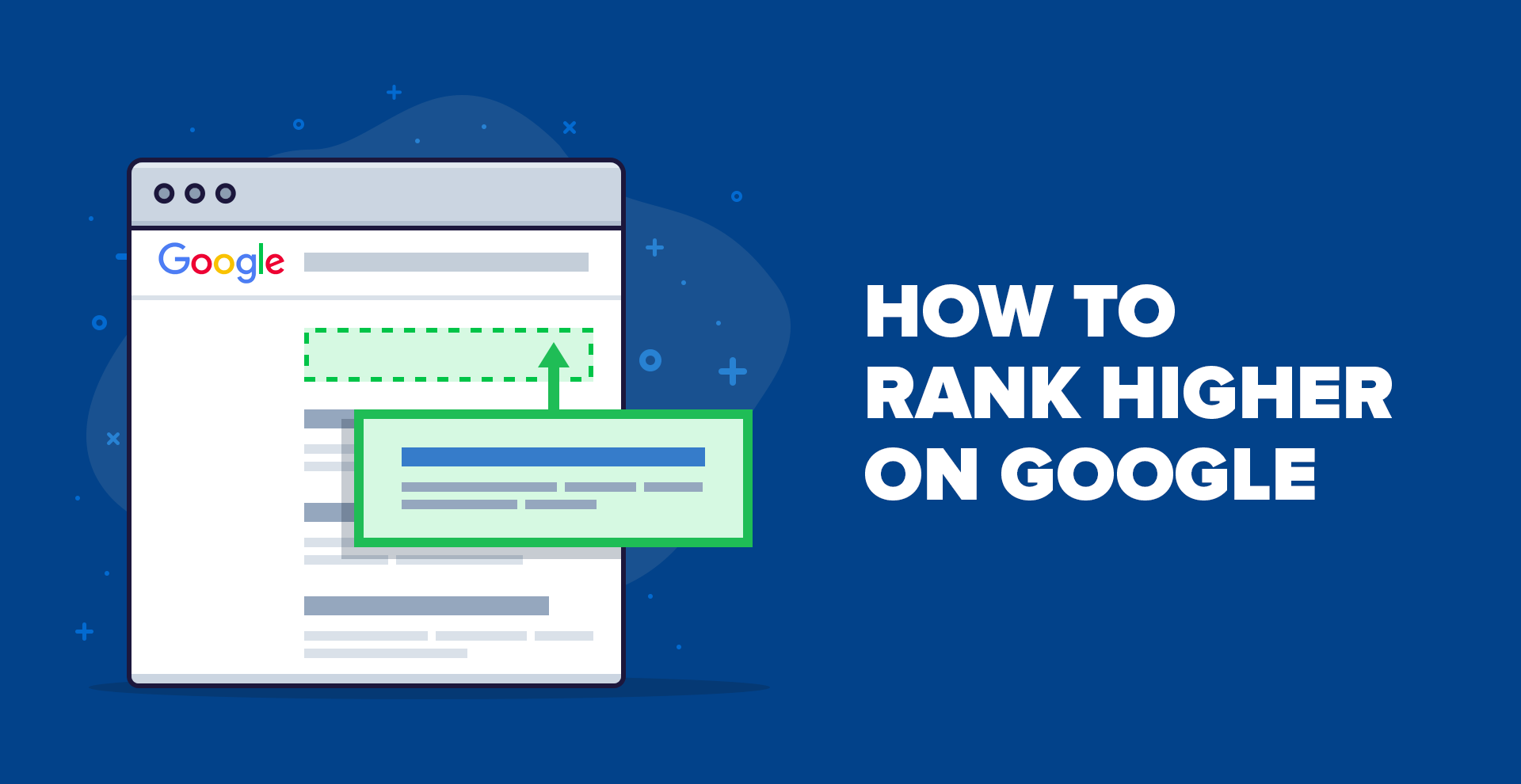Ranking higher on Google is crucial for any website that wants to attract more organic traffic. Google uses a complex algorithm that considers hundreds of factors, and this guide will break down the steps and strategies to help you improve your site’s Google ranking.
Understanding Google’s Ranking Algorithm
Google’s algorithm is designed to deliver the most relevant, high-quality content to users. It assesses your site’s content, authority, and technical elements to determine its rank in search results.
Core Elements of Google’s Search Algorithm
Google’s algorithm focuses on elements such as content quality, relevance, user experience, backlinks, and the trustworthiness of the site. These “core web vitals” and other ranking factors impact where your page appears in search results.
Recent Google Algorithm Updates and What They Mean for SEO
Algorithm updates such as BERT, Core Web Vitals, and RankBrain emphasize high-quality, user-focused content. Keeping up with these updates helps to adjust strategies and align your content with current ranking factors.
Conducting In-Depth Keyword Research
Keyword research is essential in targeting the terms users are searching for to connect with your content.
Types of Keywords: Short-Tail, Long-Tail, and Latent Semantic Keywords
Short-tail keywords (e.g., “shoes”) have high search volumes, while long-tail keywords (e.g., “best running shoes for beginners”) are more specific and often less competitive. Latent Semantic Indexing (LSI) keywords add depth and relevance.
Tools for Effective Keyword Research
Tools like Google Keyword Planner, Ahrefs, and SEMrush help identify keywords, search volumes, and competition to make informed choices.
How to Choose the Right Keywords to Target
Select keywords based on search intent, relevance, and competition. Using both high-volume and less-competitive keywords improves your chances of ranking.
Creating High-Quality Content
High-quality content is one of the most critical factors for Google rankings. Engaging, well-researched, and helpful content signals relevance and authority.
What Makes Content “High Quality” in Google’s Eyes?
Content quality includes readability, authority, and value. Google ranks content that effectively answers search queries and keeps readers engaged.
Best Practices for Creating Engaging and SEO-Friendly Content
Structure your content with clear headings, relevant keywords, and internal links. Using multimedia elements like images and videos can also boost engagement.
Optimizing On-Page SEO Factors
On-page SEO improves how Google interprets your content, impacting rankings directly.
Title Tags, Meta Descriptions, and Headers
Use your target keywords in title tags, meta descriptions, and headers to signal relevance. These elements act as a brief summary of the page for search engines and users.
Internal Linking Structure
Linking related pages within your site helps Google understand your site structure, improves navigation, and increases engagement.
Image Optimization and Alt Tags
Using descriptive alt tags for images helps Google “see” your images and can improve rankings for image searches. Image file names and sizes are also important.
Building Quality Backlinks
Backlinks are a vote of confidence from other sites, signaling authority to Google.
The Importance of Backlinks for Google Ranking
The more high-quality sites that link to your content, the more likely Google is to consider it authoritative and valuable.
How to Acquire High-Quality Backlinks
Outreach, guest blogging, and creating shareable content (like infographics) help build a strong backlink profile.
Avoiding Harmful Backlink Practices
Avoid low-quality, spammy links from unreliable sources as these can hurt your rankings.
Technical SEO for Higher Rankings
Technical SEO ensures that Google can efficiently crawl, interpret, and index your site.
Improving Website Speed
Fast-loading websites rank higher and improve user experience. Use tools like Google PageSpeed Insights to analyze and improve load times.
Mobile Friendliness and Responsive Design
Google uses mobile-first indexing, meaning mobile-optimized sites are prioritized in rankings.
Optimizing Site Structure and Navigation
A clear site structure makes it easier for Google and users to find relevant information.
Enhancing User Experience (UX)
User experience (UX) factors such as bounce rate and time on site affect your ranking.
Understanding Bounce Rate, Time on Site, and Other Engagement Metrics
Pages with lower bounce rates and higher time on site tend to rank higher as these metrics indicate user satisfaction.
Creating a User-Friendly and Visually Engaging Website
Clear navigation, easy-to-read fonts, and visuals help users stay engaged with your content.
Leveraging Local SEO for Higher Google Rankings
For businesses, local SEO helps capture search traffic from a targeted area.
Importance of Google My Business and Local Citations
Listing your business on Google My Business (GMB) boosts your presence in local search results.
Localized Content and Geo-Targeting Strategies
Creating location-based content (e.g., “best plumbers in Dallas”) helps target local searches.
Utilizing Google’s Featured Snippets and Rich Results
Featured snippets appear above regular search results and drive more clicks.
Types of Featured Snippets and How to Optimize for Them
Optimizing for paragraph, list, and table snippets increases your chances of occupying these prime search positions.
The Role of Structured Data Markup
Using schema markup improves your chance of appearing in rich snippets by helping Google better understand your content.
Monitoring and Analyzing SEO Performance
Regular analysis of SEO performance helps refine your strategy over time.
Using Google Analytics and Search Console
Google Analytics and Search Console offer insights into traffic, click-through rates, and more to help track progress.
SEO Metrics to Track for Success
Metrics like organic traffic, rankings, and bounce rates indicate the effectiveness of your SEO efforts.
Keeping Up with SEO Trends and Future-Proofing Your Strategy
SEO is ever-evolving, and staying updated is crucial to maintaining or improving rankings.
Importance of Adapting to Algorithm Changes
Google’s algorithm changes frequently, and adapting to these shifts keeps your content competitive.
Exploring Voice Search, Visual Search, and Other Emerging Trends
Optimizing for emerging trends like voice and visual search can provide an edge in ranking.
Common Mistakes to Avoid When Trying to Rank Higher
Avoiding certain pitfalls can prevent you from losing rank or facing penalties.
Over-Optimization and Keyword Stuffing
Keyword stuffing is penalized by Google; aim for a natural keyword density.
Relying on Outdated SEO Tactics
Tactics like link farms or duplicate content are ineffective and can harm your ranking.
FAQs about Ranking Higher on Google
- How long does it take to rank higher on Google?
- Generally, it takes several months to see significant changes, though results vary by niche and competition.
- Do backlinks still matter in 2024?
- Yes, backlinks remain a crucial factor for ranking higher in Google search results.
- Can social media help improve my Google ranking?
- Social media indirectly affects rankings by driving traffic and engagement, which signals quality to Google.
- Is it necessary to update old content for SEO?
- Regularly updating content keeps it relevant and can improve rankings.
- What’s the best way to optimize for voice search?
- Use natural language and target question-based keywords to better align with voice search queries.
- Does Google My Business help with SEO?
- Yes, Google My Business enhances local SEO and helps local businesses rank higher in local searches.
Conclusion
Ranking higher on Google requires a comprehensive approach, combining high-quality content, effective keywords, technical SEO, and user engagement. By following these steps and keeping up with SEO trends, your site can achieve sustained visibility and attract more organic traffic over time.

